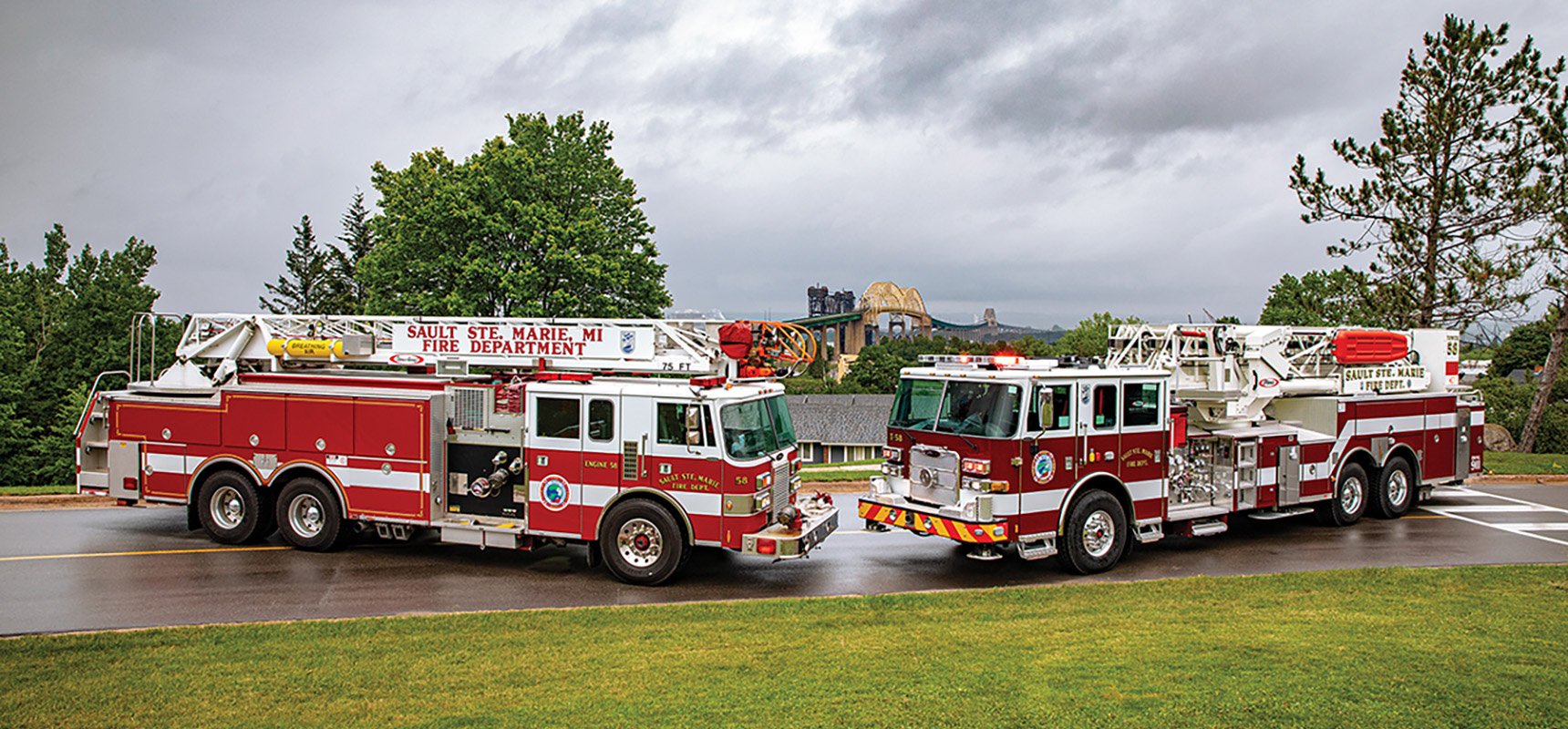 When you hear the phrase ‘types of aerial fire trucks,’ you may think of ladders and towers, tractor drawn apparatus and quints. But breaking down the broad category of ‘aerial fire trucks’ is a little more complex.
When you hear the phrase ‘types of aerial fire trucks,’ you may think of ladders and towers, tractor drawn apparatus and quints. But breaking down the broad category of ‘aerial fire trucks’ is a little more complex.
This blog post will explain the types of aerial fire trucks in an easy-to-understand manner using the National Fire Protection Association 1900 Standard and some of the most common and innovative configurations your department should review to obtain an in-depth overview of aerial fire truck selection. It explores the main category of aerial devices, the sub-category of aerial classifications and lastly, possible aerial configuration types.
NFPA Aerial Devices
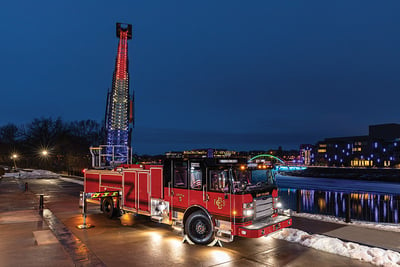 The most important stepping stone to understanding aerial fire trucks is to understand aerial device classifications. According to NFPA standards Chapter 19: Aerial Devices, there are three types of aerial devices:
The most important stepping stone to understanding aerial fire trucks is to understand aerial device classifications. According to NFPA standards Chapter 19: Aerial Devices, there are three types of aerial devices:
- An aerial ladder device is a mechanically-operated extendable ladder mounted on a fire truck with either a mid-mount, rear-mount configuration or tractor-drawn configuration.
- An elevating platform device features an aerial ladder or boom equipped with a platform or basket at the tip, also known as a tower.
- A water tower device is a boom that can articulate, telescope or both, featuring a permanent waterway designed to supply a large capacity elevated water stream.
Within each aerial device category, there are sub-categories or classifications of aerial fire trucks, further defined by NFPA standards. Below, we explore each of the aerial fire truck classifications in detail.
Classifications of Aerial Fire Trucks
Aerial fire trucks can fall into several classifications, including aerial fire apparatus, pumper fire apparatus with aerial device, quint fire apparatus and mobile foam fire apparatus with aerial device.
The task of choosing the right aerial fire truck for your fire department is dependent upon many factors. The main priority in truck selection is determining the needs of the community to clearly define the mission of the truck. Once the truck’s mission is determined, fire truck selection committee members can work with the insurance company to understand ISO points and how that plays into truck selection.
What is ISO Fire Rating?
ISO stands for Insurance Services Office (ISO), which is an independent, for-profit organization. The ISO scores fire departments on how they are doing against its organization's standards to determine property insurance costs. The score reflects how prepared a community is for fires. An ISO score looks at many factors, including appropriate water supply, maximized personnel and staffing capacities, adequate firefighter training, and established standard operating procedures and data, such as telematics.
As a community reviews aerial fire truck options, it is important to understand the department’s ISO points for the different classifications of aerials.
Aerial Fire Apparatus
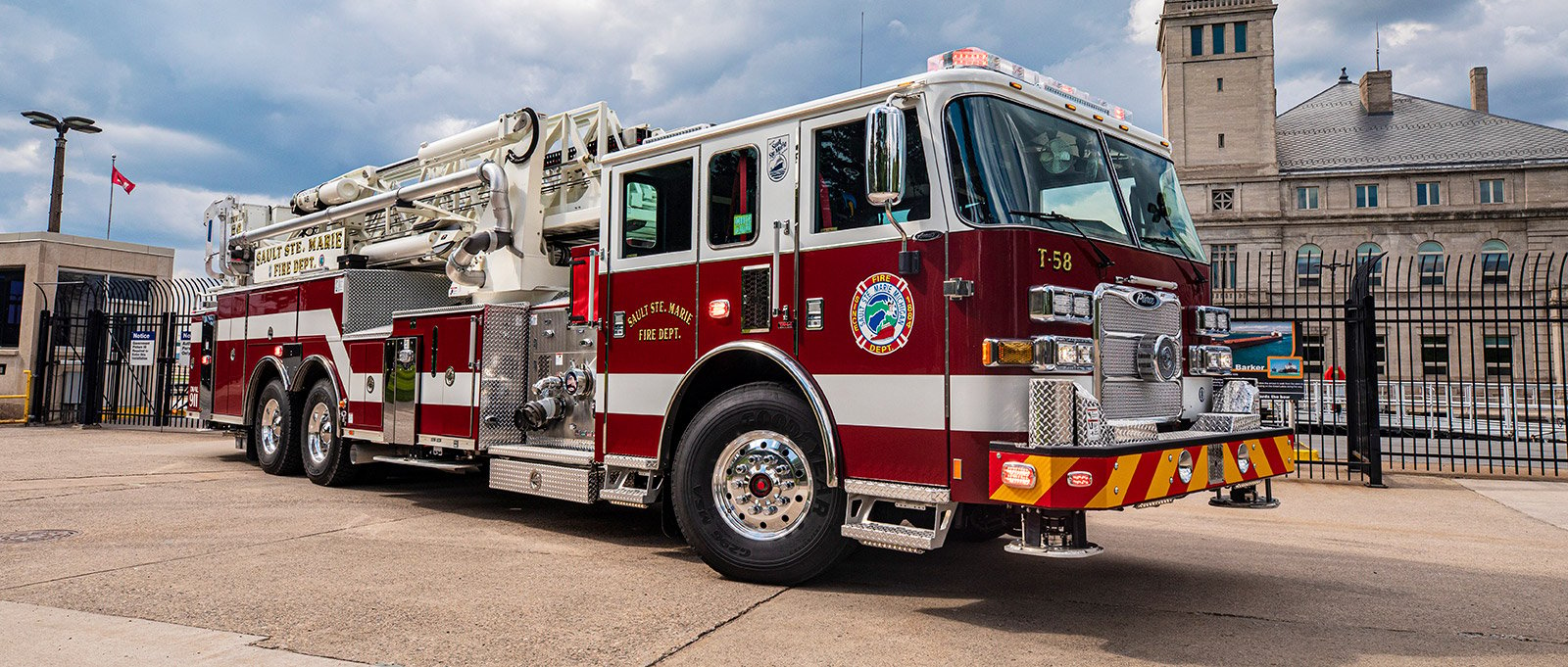 An aerial fire apparatus can look very different, department to department. The NFPA requirements for aerial apparatus outlined in Chapter 8: Aerial Fire Apparatus, are quite simple, “The apparatus shall be equipped with an aerial ladder, elevating platform, or water tower that meets the requirements of Chapter 19 (Aerial Devices).”
An aerial fire apparatus can look very different, department to department. The NFPA requirements for aerial apparatus outlined in Chapter 8: Aerial Fire Apparatus, are quite simple, “The apparatus shall be equipped with an aerial ladder, elevating platform, or water tower that meets the requirements of Chapter 19 (Aerial Devices).”
As such, choosing what to include on the fire truck can vary greatly. An aerial fire apparatus can include or exclude a fire pump, a foam proportioning system, a water tank and hose storage. The main required specifications, other than the inclusion of an aerial device, is that the truck must include a minimum of 40 ft(3) enclosed weather-resistant compartmentation and a minimum of 115’ of ground ladders, as well as a specific listing of equipment.
Learn more about aerial apparatus and compare the specifications now.
Pumper Fire Apparatus with Aerial Device
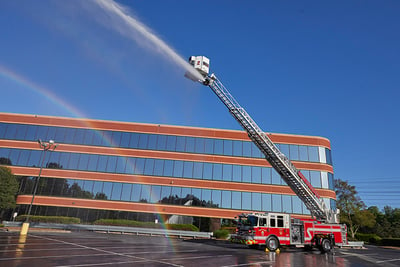 A pumper fire apparatus with an aerial device is required to meet the basic standards of NFPA Chapter 5: Pumper Fire Apparatus, for the pumper apparatus and the aerial device must meet all requirements outlined in Chapter 19: Aerial Devices.
A pumper fire apparatus with an aerial device is required to meet the basic standards of NFPA Chapter 5: Pumper Fire Apparatus, for the pumper apparatus and the aerial device must meet all requirements outlined in Chapter 19: Aerial Devices.
Some of the key specifications of a pumper fire apparatus include:
- A fire pump with a minimum rated capacity of 750 gpm.
- A water tank that meets the requirements of Chapter 18: Water Tanks, with a minimum certified capacity of 300 gallons.
- A specified amount and size of hose, ground ladders, as well as equipment
A fire department might choose a pumper fire apparatus with an aerial device based on the type and amount of hose and equipment they determine is required.
Follow the link to see how other fire department’s configured their pumper fire trucks with an aerial device.
Quint Fire Apparatus
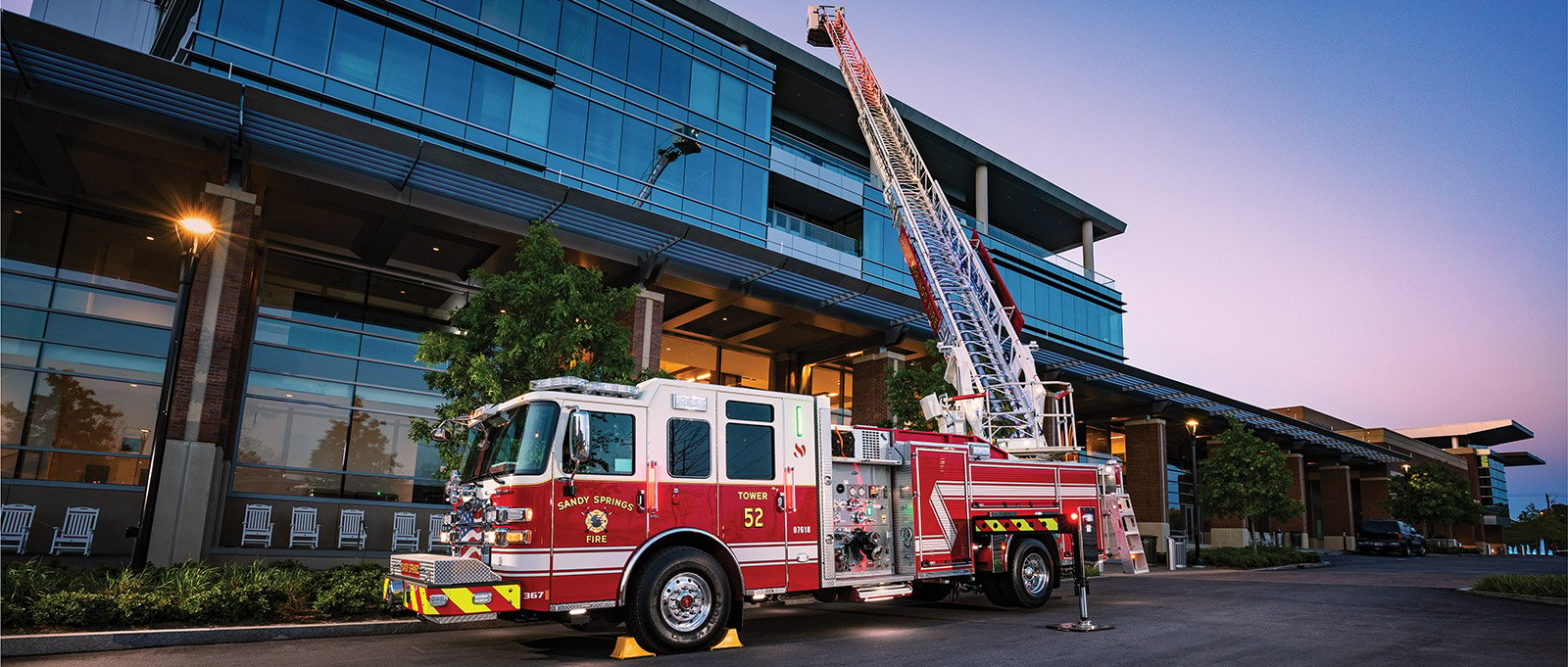 A quint fire truck, also known as a quintuple combination pumper, is an apparatus that combines the rescue and fire fighting capabilities of an aerial device and the water-pumping ability of a fire engine.
A quint fire truck, also known as a quintuple combination pumper, is an apparatus that combines the rescue and fire fighting capabilities of an aerial device and the water-pumping ability of a fire engine.
As its name implies, a quint fire truck includes five main tools for firefighting functions: a fire pump, water tank, supply hose, aerial device with a permanently attached waterway and ground ladders.
Quint fire apparatus specifications are listed in NFPA Chapter 9: Quint Fire Apparatus, including these key provisions:
- The fire pump must include a minimum rated capacity of 1000 gpm.
- The aerial device must include a permanently installed waterway.
- The water tank must have a minimum certified capacity of 300 gallons.
- A minimum of 40 ft(3) enclosed weather-resistant compartmentation.
- A minimum of 85’ of ground ladders and a specified amount of hose and equipment must also be provided.
A quint fire truck delivers a multifaceted tool with both a ladder and pumper engine together. This offers fire departments tremendous emergency response capabilities.
Learn more about quint apparatus in this blog post.
Mobile Foam Fire Apparatus With Aerial Device
A mobile foam apparatus provides rapid deployment of foam to control and extinguish flammable and combustible liquid fires and chemical spills.
The specifications for mobile foam apparatus can be found in NFPA Chapter 11: Mobile Foam Fire Apparatus and includes these key points:
- A fire pump with a minimum rated capacity of 750 gpm.
- The aerial device must be equipped with a permanently mounted waterway with a maximum intake gauge pressure of 20 psi.
- The included foam system must meet the requirements of Chapter 20: Foam Proportioning Systems.
- The foam concentrate tank must have a minimum certified capacity of 500 gallons.
- Ground ladder storage is not required.
- A specified amount of hose and equipment.
The size and support capabilities of the mobile foam apparatus are typically found at refineries or in other industrial applications.
Learn more about mobile foam fire apparatus now.
Aerial Configuration Options
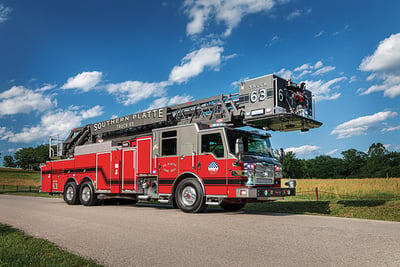 There are different types of aerial fire truck configurations for each classification of an aerial.
There are different types of aerial fire truck configurations for each classification of an aerial.
- A rear-mounted aerial device features an aerial device that is mounted at the back of the truck.
- A mid-mount aerial device features an aerial device mounted in the truck's middle, which consists of four or five telescoping ladder sections.
- A tractor drawn aerial device includes a tractor, a trailer and a tiller cab. Even though it is much longer than a straight-frame aerial, a tractor drawn aerial is the most maneuverable aerial apparatus available. Tractor drawn aerials are typically not used for mobile foam applications.
Learn more about aerial devices in this comprehensive overview.
As you consider the right aerial fire truck configuration, be sure to talk with your fire truck manufacturer and dealer to determine the possible combinations of features that best suit your community’s needs.
Why Choose Pierce Aerial Fire Trucks?
If you are looking for a new aerial fire apparatus, Pierce Manufacturing can help. Offering more than 100 years of manufacturing experience and innovative success, along with the sustainability of Oshkosh Corporation, Pierce has a reputation for quality, reliability and a commitment to safety and performance.
- Learn more about our experience dealer network and how they can help you get started.
- Find out how our experienced workforce sets a high standard of quality.
- Review our robust aftermarket support services that support fire departments through the life of their purchase.
If you have any additional aerial fire truck questions, please reach out to your local dealer or post them in the comments below!